The creation of water skiing dates back as early as 1922. The Samuelson brothers, Ralph and Ben, towed each other around Lake Pepin in Lake City, Minnesota using a pair of boards and a clothesline. After much trial and error, they finally discovered that leaning backward in the water with the ski tips up was the best way to ski. Fast forward a century later and the sport of water skiing has become one of the most popular watersports activities to enjoy on a day at the lake, suitable for all ages and experience levels.
Are you new to water skiing? Let’s cover some of the basics.
Water Skiing Gear
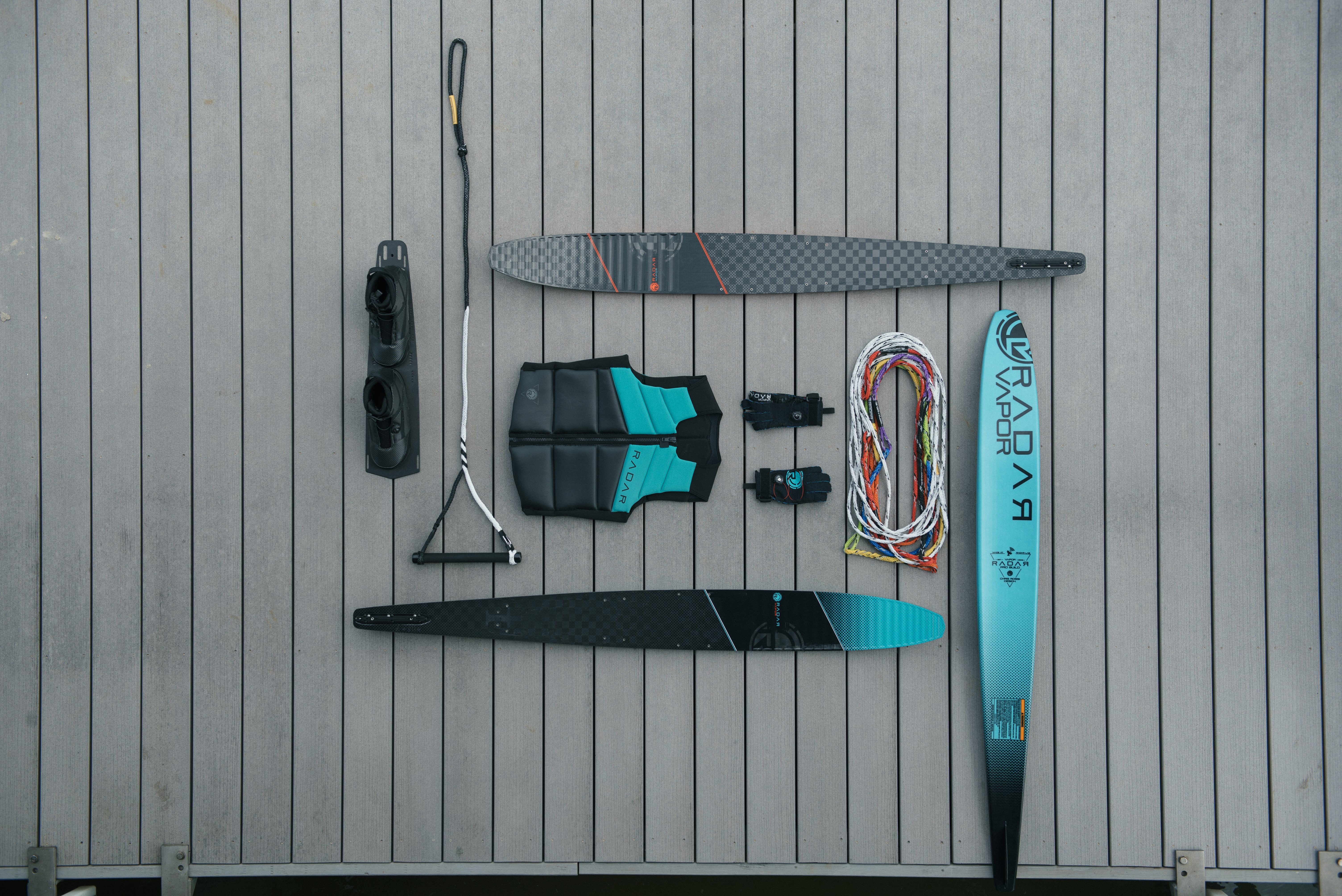
Boat Selection
There are many boats that you can use for water skiing; it doesn’t have to be one specifically designed for skiing like a ski boat. In fact, many newer pontoon boats can be used for water skiing. Generally, you want a boat that sits low in the water with a flatter bottom, but as long as it can reach 20 knots (23 mph) quickly, it can be used for water skiing.
Ski Selection
The four main types of water skis are as follows: combos, trainers, slalom, and shaped. The most popular is the combo. Combo skis are sold as a pair. One ski will have two bindings for switching to slalom skiing, and the other will have only one. Combo skis are best for the entire family and allow less experienced skiers to use both skis and more experienced skiers to switch to one. The bindings are easily adjustable for a wide range of sizes.
If you are just starting out, you may want to pick up a set of trainers first, designed primarily for youth. Trainers have a bar connecting the skis together, so the rider does not have to focus as much on keeping the skis in place. The shape of the ski is also wider which makes for an easier start.
These are the main two types of skis for beginners, but there are also two other types, slalom and shaped, for those with more experience. Slalom skis are sold individually and have two bindings. They are wider at the front and narrower at the tail to help you make faster turns and decelerate easier. Shaped skis are also slalom skis, but they are much wider which helps with stability and makes deep-water starts easier. They are designed to make slalom skiing easier and to help you learn single ski techniques.
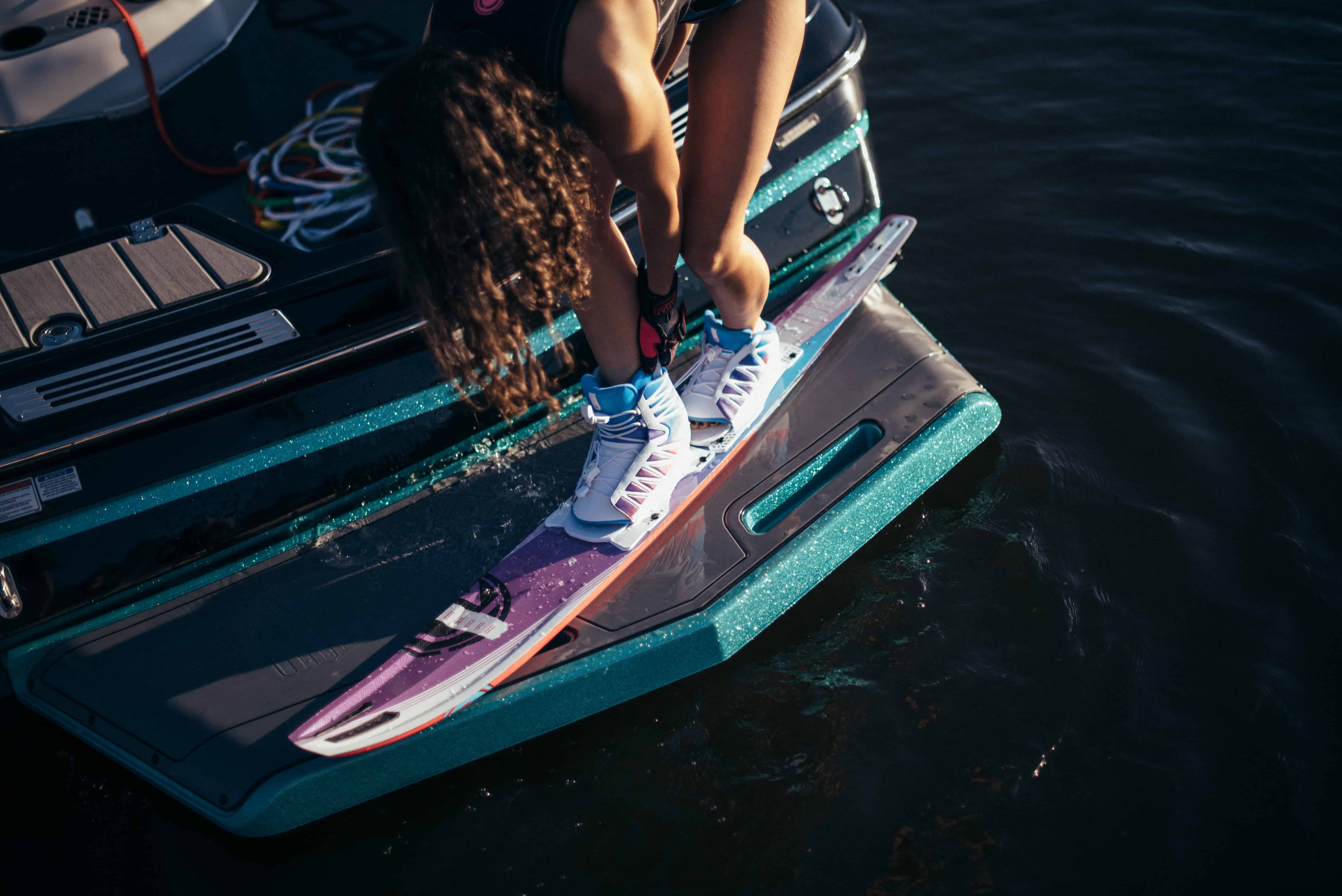
Ski Sizing
Once you have a style of ski picked out, you need to determine the correct length. To find the correct length, take into consideration the skier’s weight, the speed they wish to ride, and the style of ski selected. Longer, wider skis will be slower and more stable, whereas shorter, narrower skis will be faster and more maneuverable. The chart below is provided as a reference for determining ski length.
Boat Speed
Rider Weight 26-30 mph 30-34 mph 34-36 mph
60-100 lbs. 59″-63″ 59″-63″ 59″-63″
95-125 lbs. 62″-64″ 62″-63″ 62″-63″
115-140 lbs. 64″-66″ 63″-66″ 63″-65″
135-160 lbs. 66″-67″ 65″-66″ 64″-66″
150-180 lbs. 67″-68″ 66″-67″ 65″-67″
170-200 lbs. 68″-72″ 67″-68″ 66″-68″
190-215 lbs. 72″ 68″-72″ 67″-68″
210 lbs. & up 72″ 68″-72″ 68″-72″
Rope and Handle Selection
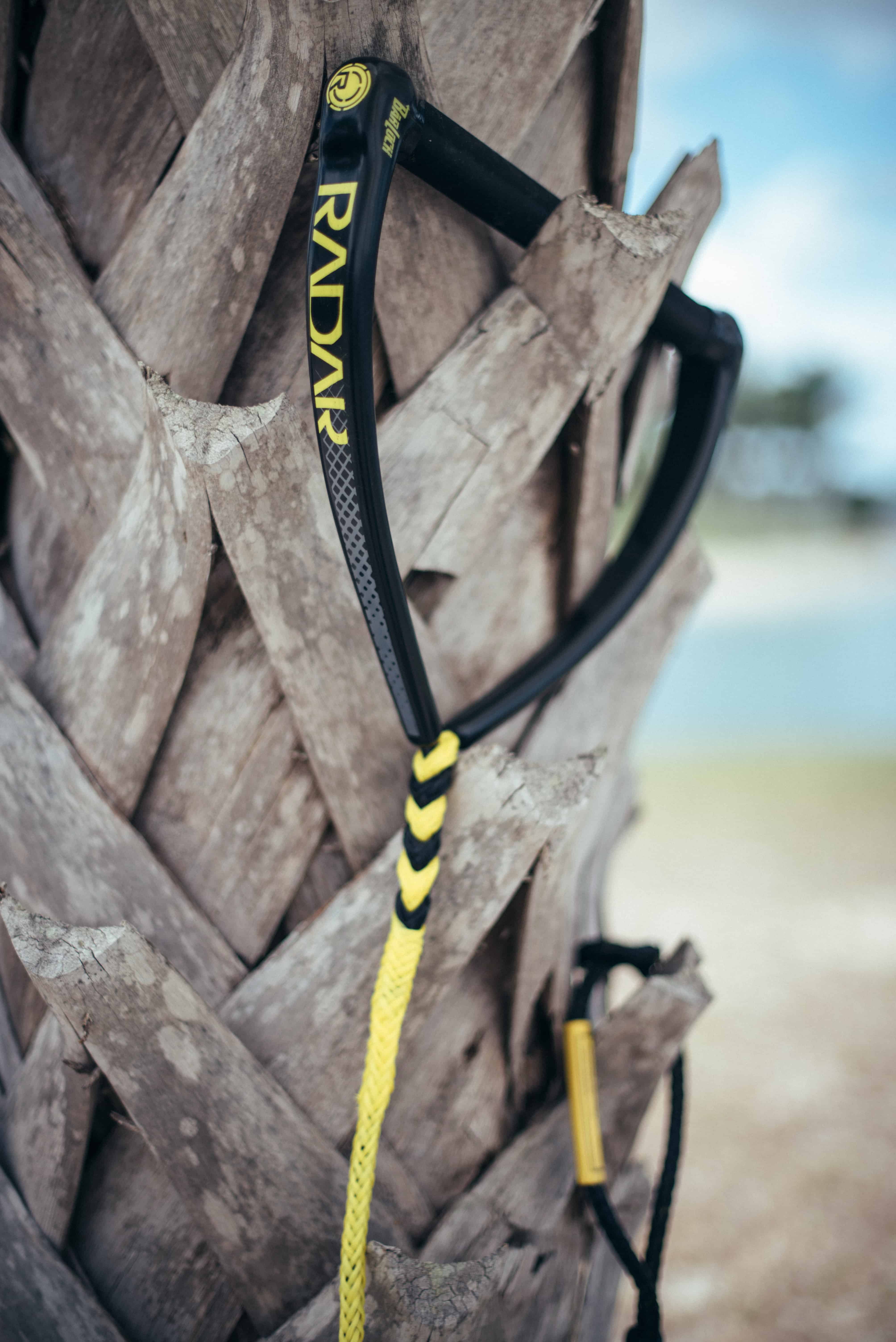
The average length of a ski rope is 75’. Some ski ropes have different sections with “take-off” loops so you can shorten the ski rope for more of a challenge when running a slalom course. The handle is typically between 11” – 13” wide. The handle is made of foam or rubber for a comfortable grip. Some skiers choose to use Ski Gloves for added comfort/protection.
Binding Selection
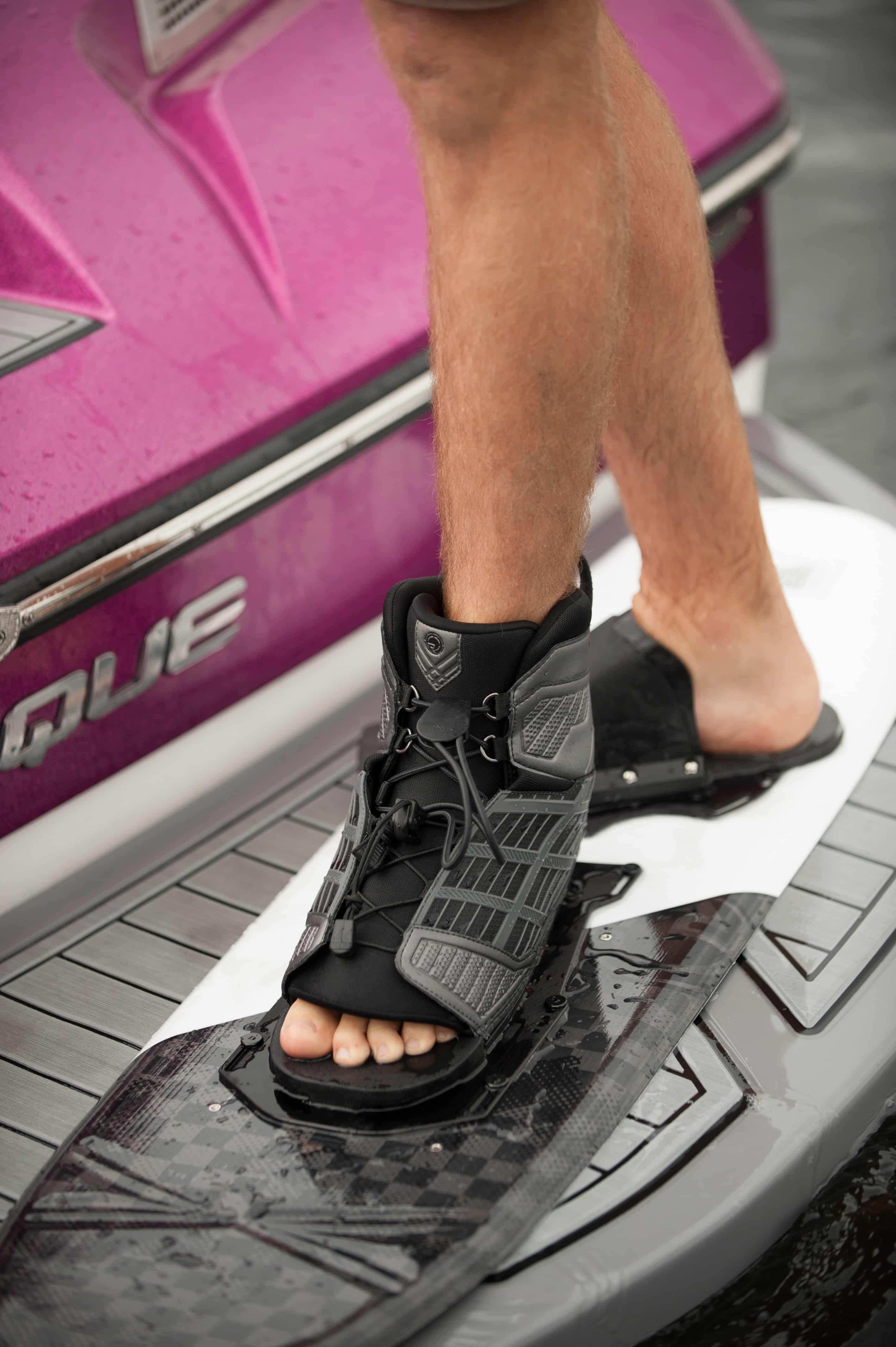
If your skis don’t come with bindings, your next step is choosing the correct binding for your skiing style. The first choice you have is open or closed-toe. If you’re looking for a set for yourself then go with closed-toe, these are usually more size-specific and offer the tightest fit and best performance. However, if you just want a set that fits multiple people, choose open-toe or adjustable bindings. These are more cost-effective and allow everyone on board to take turns using the same skis. When outfitting a slalom ski, you can choose between a front boot and rear toe plate or front and rear boots. The double boot setup offers more support and response, whereas a single boot and rear toe plate setup offers more freedom.
Life Jacket
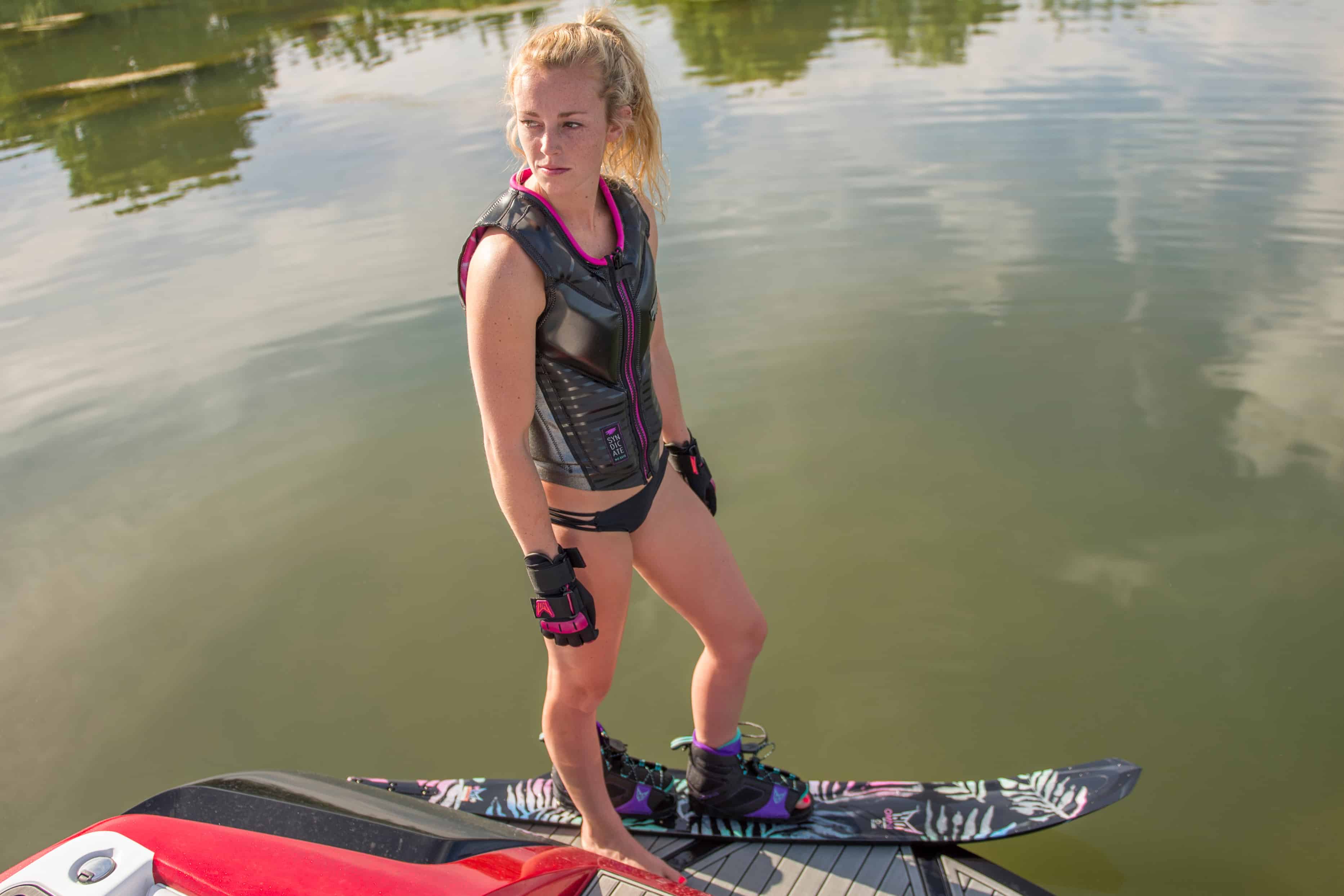
Finally, you will need a properly fitted life vest. It’s imperative that the vest fits you well to safely keep you afloat in the water. The vest is chosen based on your torso size for adults and weight for kids. The most common type of flotation vest for watersports is a USCG Type III or Level 70 PFD. These vests offer better mobility for watersports while also providing USCG approved flotation for safety.
Overton’s Ski Gear Picks
- Overton’s Pick for Trainer Skis for Riders up to 80 lbs.: Gladiator Trainer Waterskis
- Overton’s Pick for Trainer Skis for Riders up to 125 lbs.: Gladiator Jr. Ultra Shaped Combo Waterskis
- Overton’s Pick for Combo Skis: Gladiator Traditional Combo Waterskis
- Overton’s Pick for Slalom Skis: O’Brien Pro Tour Slalom Skis
- Overton’s Pick for Ski Rope/Handle: Overton’s Pro Champ Waterski Handle
- Overton’s Pick for Men’s Adult Vest: Overton’s Men’s BioLite Life Jacket With Flex-Fit V-Back
- Overton’s Pick for Women’s Adult Vest: Overton’s Women’s BioLite Life Jacket With Flex-Fit V-Back
- Overton’s Pick for 75-125 lb. Junior Vest: Overton’s Junior BioLite Life Jacket
For more choices, make sure you check out our full selection of Water Ski’s and Accessories.
Getting Started
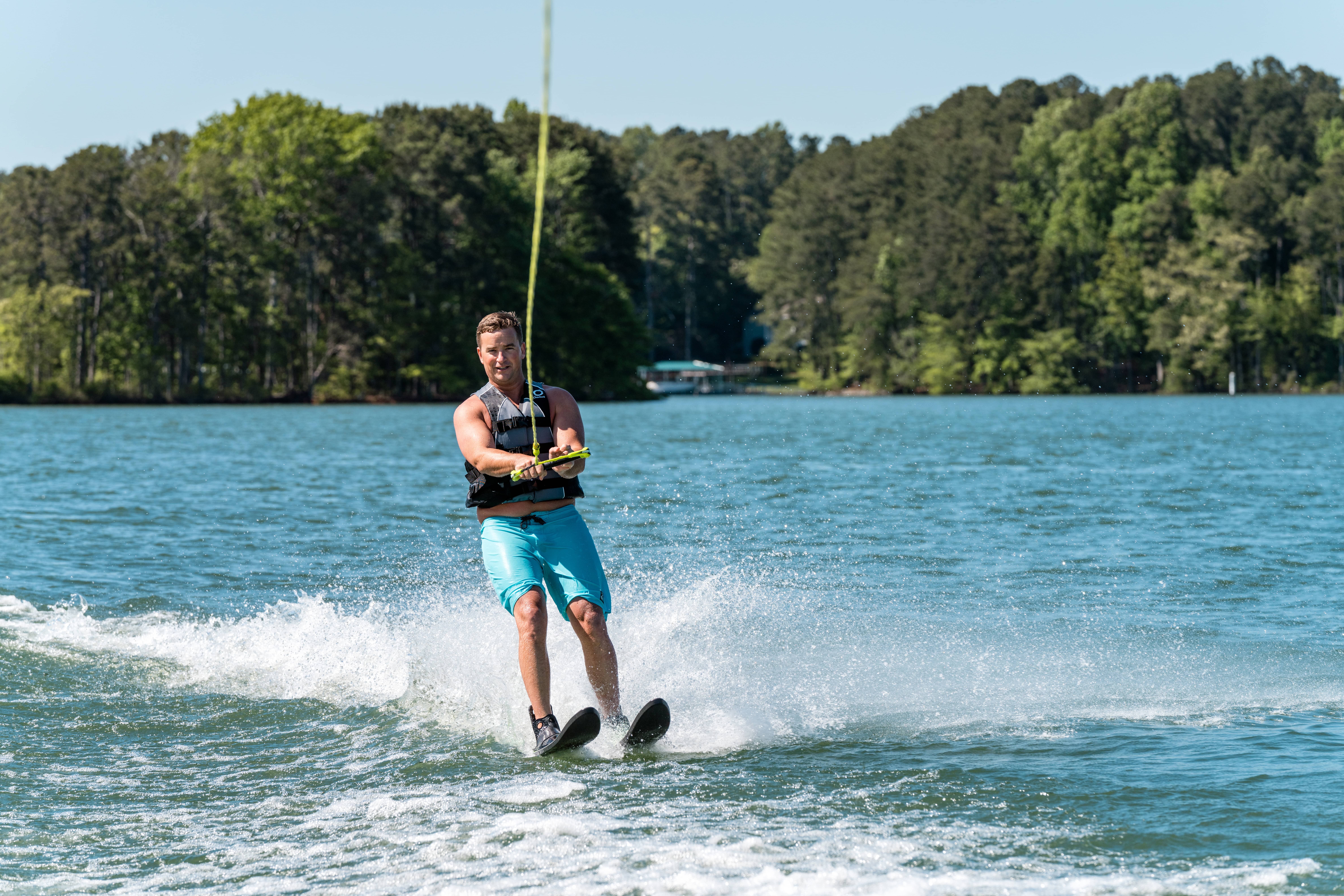
Once you have the correct gear, find someone who has some water-skiing experience and is willing to take you out on the water. A good instructor will start with a few on-land exercises before you hop off the back of a ski boat.
Try these tips before dipping your toes in the water:
- Learn how to get your feet in and out of the bindings and how to adjust them for comfort.
- Understand the “cannonball” starting position. Tuck your knees up into your chest as you sit on the skis and allow the force of the boat pulling away, with the line taut, to lift you out of the water.
- Hold the handle with knuckles facing up for both comfort and efficiency.
- Keep your arms straight (but not locked) when the boat is pulling you up to reduce arm fatigue.
Once you’re in the water, signal to the driver that you’re ready to go. Keep the rope and handle between the skis, hang on tight, and don’t try to pull yourself up. Instead, let the boat and the momentum pull you from the starting “cannonball” position into a sitting position. Then let your hips come under your shoulders and allow yourself to naturally stand on the skis.
Keep your eyes forward. To turn, or carve, behind the boat, lift the weight off the foot in the direction you want to go and apply more pressure to the opposite leg. For example, you’re skiing along and want to carve toward the right wake. Release pressure from your right foot and apply more pressure with your left. You’ll head right toward the wake. When you hit the wake, absorb the shock with loose knees.
You’re skiing. That’s all there is to it! Now keep after it and enjoy yourself. Comfort and ease will come with each attempt, so don’t give up if you fall the first few times. It happens to the best of us.
Water Skiing Safety
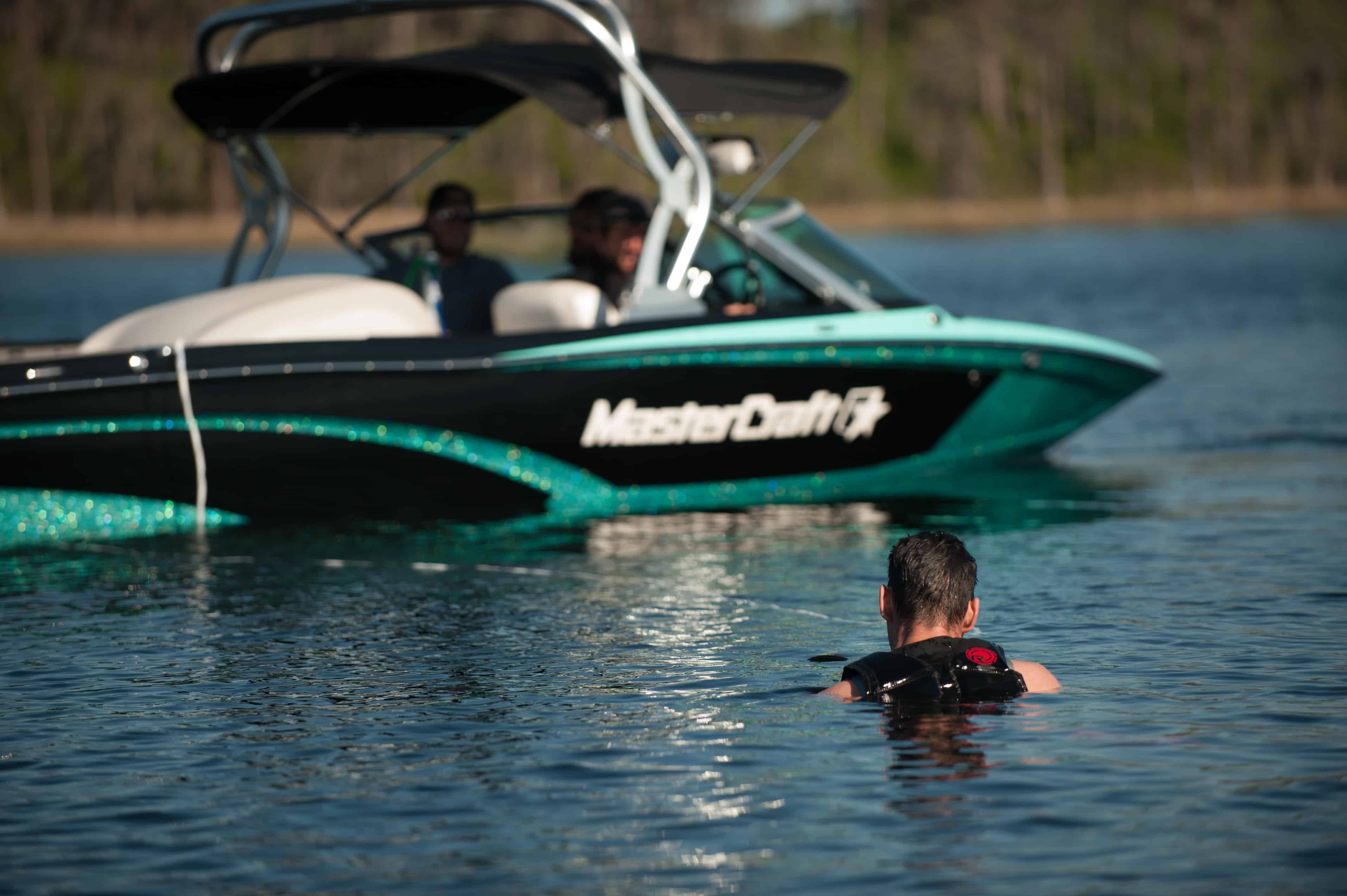
Skiing is a lot of fun, but any time you’re in the water, it’s important to stay as safe as possible.
A few of the ways you can do that are:
- Always wear a PFD. No exceptions.
- Don’t ski near docks, swimming areas, or other boats.
- Make sure the water you’re in is deep; the minimum depth should be at least 6 feet.
- If you feel like you’re going to fall, try to fall backward or to the side to reduce potential contact with the skis.
- If you fall in an area with other boats around, lift a ski up out of the water to signal to other boats that you’re there. It can be hard to see someone when only their head is above the surface of the water.
- Don’t put any part of your body through the handle and make sure the rope is clear of your body and other obstructions. Use ropes, handles, and skis only as intended.
- Have an observer in the boat keep an eye on the skier at all times.
- Make sure your observer has and knows how to use a ski safety flag to signal other boaters when you’re in the water.
Water skiing is one of the most popular watersports for a reason – it’s a whole lot of fun. Whether you’re just starting out or brushing up on the basics after some time away from the water, water skiing is an activity that will pull you in every time.
What are some of your beginner water skiing tips? Tell us in the comments below!

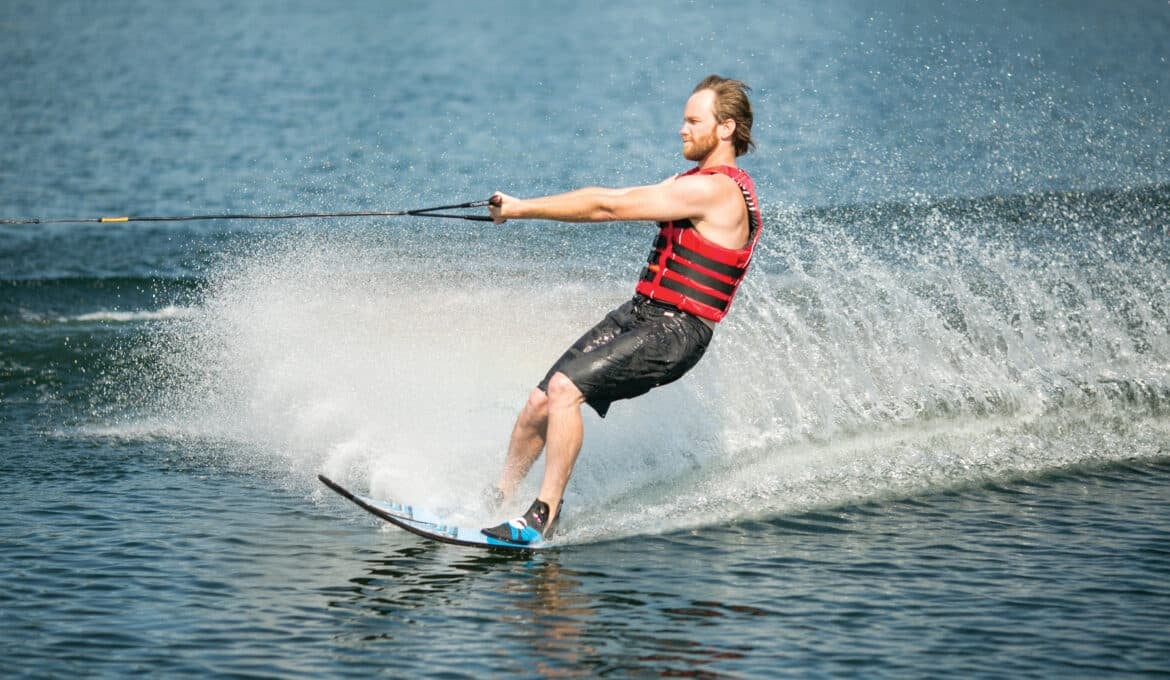



I tore my bicep first time skiing when I fell 🙁
[…] you’re new to water skiing, you probably have a lot of questions. One of those questions may be, what size water skis do I […]